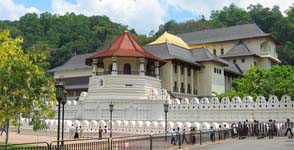 |
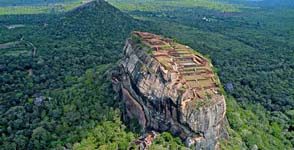 |
|
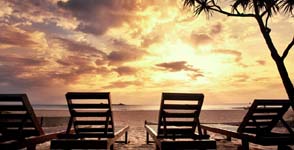 |
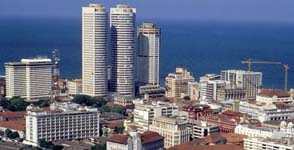 |
 |
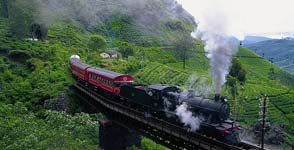 |
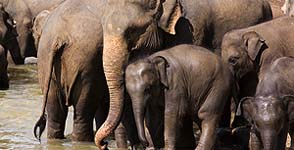 |
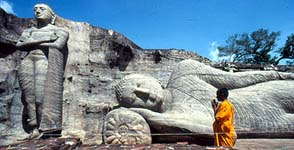 |
Kandy
Kandy, the last royal capital of Sri Lanka is a major tourist destination. ( 115kM from Colombo at 465 meters above sea level). Famous for the Temple of the Tooth and many other temples the city could be called the cultural capital of the island.
Kandy Perahera, the pageant of the temple of tooth where Buddha's tooth is kept is held either in July or August each year to parade the golden caskets is a must see itenary if one is visiting Sri Lanka during these months. The final night procession is the most spectacular event of the country. More than 50 elephants parade the city accompanied by the drummers, dancers and chieftains.
he city established in the 15th century was the last royal capital where 2500 years of royal rule ended. This bustling market town is rich in cultural diversity has plenty of iteneries to offer to the tourists from songs dances and handy crafts to ancient temples and adventure activities. Kandy is a good transit point to the cultural triangle to the north or hill country to the south. The city is also a good source of souvenirs or to experience many cultural performances at it's various hotels in the city.
Anuradhapura
Anuradhapura is Sri Lanka's most sacred town. From origins as a settlement in the 6th century BC, it was made capital in 377 BC by King Pandukabhaya (437-367 BC) who started the great irrigation works on which it depended, and named it after the constellation Anuradha.
Anuradha was the first general of the king Vijaya: the legendary ancestor of the Sinhalese race. The city measured 52 square kilometers' and was maintained by at least 500 scavengers.The city was divided into several quarters. Foreign traders lived in one quarter. Their houses were of 2 or 3 stories. Artisans occupied some avenues.
Sigiriya
Sri Lankan architectural tradition is well displayed at Sigiriya, the best preserved city centre in Asia from the first millennium, with its combination of buildings and gardens with their trees, pathways, water gardens, the fusion of symmetrical and asymmetrical elements, use of varying levels and of axial and radial planning.
The Complex consists of the central rock, rising 200 meters above the surrounding plain, and the two rectangular precincts on the east (90 hectares) and the west (40 hectares), surrounded by two moats and three ramparts.
Hikkaduwa
The popular surfing town with magnificient coral reefs with abundance of tropical fish, beautiful clear waters and white sand beaches, ship wrecks for diving Hikkaduwa is a place for all the water sports you could imagine, and plenty of hotels, shops and restaurants .
Colombo City
Sri Lanka ‘s largest and most important city, Colombo was the capital until the seat of the parliament shifted to Sri Jayawardenapura Kotte. Today, this city of more than one million remains the political, commercial and the cultural hub of Sri Lanka.
Dambulla
Dambulla is a part of the Cultural Triangle declared by UNESCO is on the main road from Sigiriya to Kandy about 19Km from Sigiriya. There are over 80 caves in the surrounding and some of them have been used by the monks as meditation locations. Major attractions are spread over 5 caves, which contain the statues and the paintings. Since it's founding in the 1 century BC by King Valagamba, many improvements and additions have been carried out to the sculptures and paintings over the years. Hindu statues are believed to be of the 12 century AD and the latest paintings are of the late 18-century. The temple is a perfect location to view evolution of the ancient Sri Lankan arts. Dambulla is a unique and important historical site because of the amalgamation of the material from many eras.
Nuwara Eliya
Situated at around 2000m above sea level and s urrounded by lush tea plantations Nuwara Eliya is the main hill resort of Sri Lanka and the heart of the tea industry. Once a pleasure retreat of the European planters the town is still very much an English town with many English style bungalows and buildings. Nuwara Eliya is a good escape for those who miss cool breez.
Pinnawala
See baby jumbos wondering around their cramped foster home or bottle fed and bathed by their human foster fathers at Pinnawala, about 90Km from Colombo towards Kandy is the home to some 60 or more elephant orphans. A place you will really enjoy and never forget. Most orphans are accustomed to their curious human visitors are harmless.
Started in 1972 the Elephant Orphanage was relocated to at the present site in 1975 Bathing time at Ma Oya just in front of the orphanage is sharp at 10.00am and 2.00pm. Feeding time is about and hour earlier.
Polonnaruwa
The history Polonnaruwa goes as far as 6th century BC when a minister of the king Vijaya (From whom the Sinhalese race was born) established a town called “Vijitha Grama” on the area now called Kaduruwela. This is also the place for the famous “Battle of Vijithapura” between the Great King Dutugamunu (161-131 BC) and the Tamil invader Elara in his effort to re-unite the country under one Sinhalese King. This area was gradually developed as an influential agricultural town with large irrigation tanks and complex waterways built by various kings who ruled from Anuradhapura.

